Ukulele: chords, tuning and scales for beginners
Everything you need to start playing a uke

Ukulele: chords, tuning and scales for beginners
This teeny guitar spawn has experienced a big resurgence in the last couple of years. Portable, acoustic and easy to play, the ukulele has gained worldwide popularity from its origins in Hawaii, with players including comedian George Formby (When I’m Cleaning Windows), The Beatles’ George Harrison, and YouTube ukulele sensation Jake Shimabukuro all pledging their allegiance to the diminutive four-string.
This guide to the ukulele first gets you in tune (it’s not all that different to your guitar’s tuning), and then provides 14 simple chords to get you started. The major and natural minor scales we’ve given you will help you get to grips with the uke’s neck; as you play, think about the name of each note on the fretboard.
Once you’ve got your fingers used to the uke’s neck, try out the two simple tunes on the final two pages of this gallery: the first is a simple strummed piece that’s typical of the chord sequences traditionally played on ukulele; and the second is a more complex finger-picked melody that helps you develop independence of movement in your picking hand fingers.
- Freshen up your uke with the best ukulele strings
- Best beginner ukuleles: top entry-level ukes
Grab everything you need to get playing the ukulele in one handy package - Play Guitar Now: Ukulele is available now from all good newsagents and online
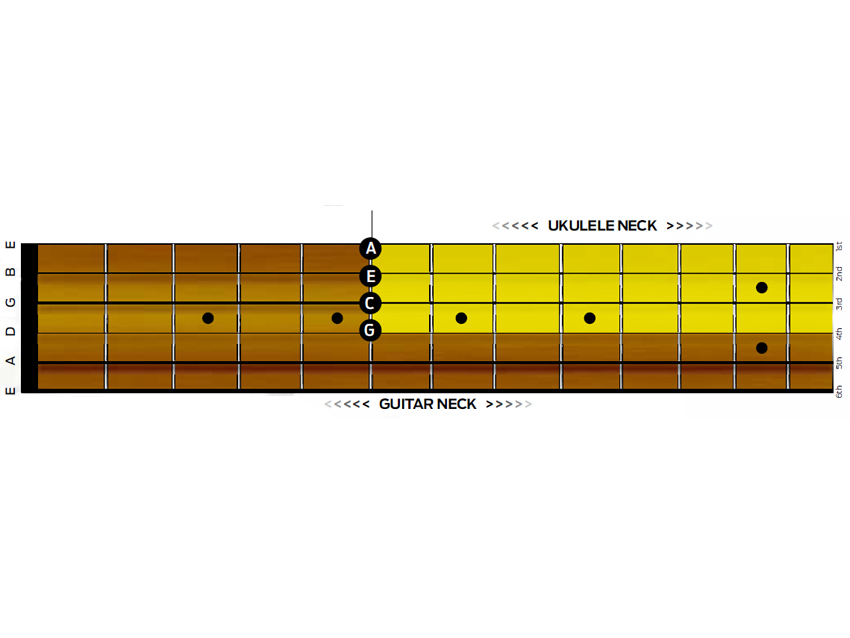
Tuning
The strings on a ukulele are tuned (from low to high) to G, C, E and A. This is the same as the top four strings on the guitar at the 5th fret, shown in the diagram above.
The big benefit here is that anything you can play on the top four strings of your guitar can be transferred onto a uke. However, standard tuning on a uke is a bit different to a guitar because the fourth string is raised by an octave, which means that the lowest string isn’t actually the lowest note.
This is unconventional for guitarists but it shouldn’t present any problems when it comes to chords - just keep it in mind when you’re playing melodic lines. Plus, because of the ukulele’s short neck, you don’t have to worry about winding the strings to breaking point to get the correct pitch.
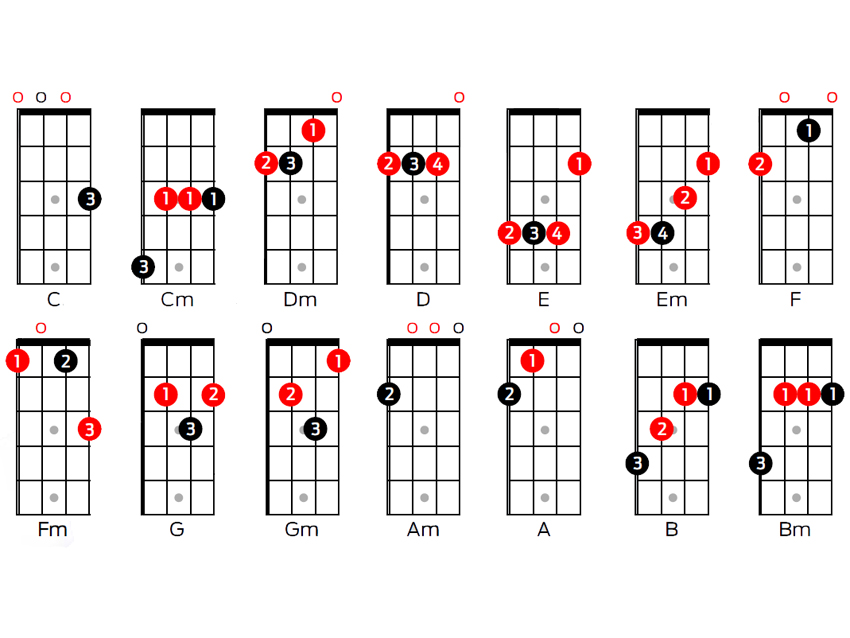
Chords
We’ve given you the chord shapes for both major and minor shapes from A to G. 14 chords may sound like a lot to learn, but this collection gives you a good basic chord vocabulary to work with. Try practising these chords by playing chord progressions from some of your favourite tunes.
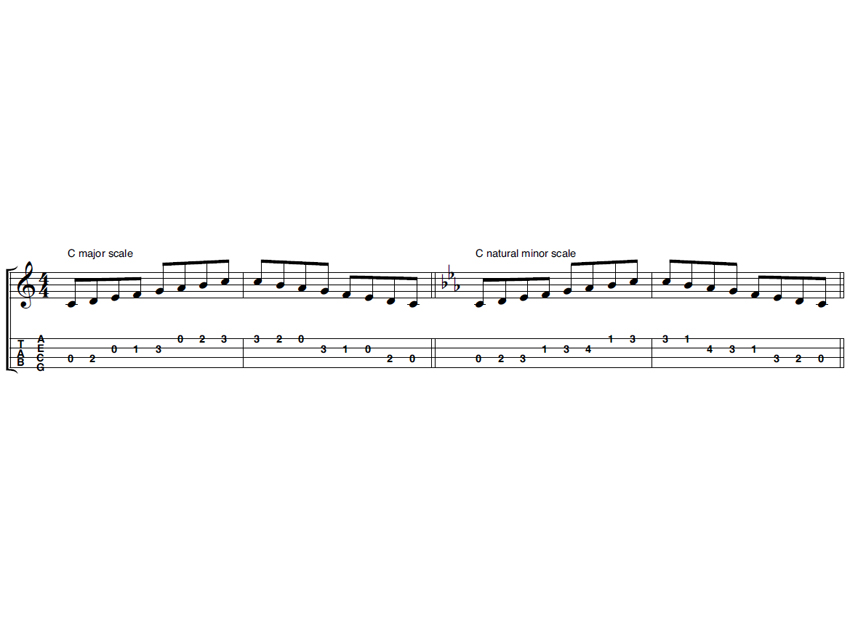
Major and natural minor scales
Play these scales with your pick hand fingers rather than with a pick. You may want to use your index (i) finger and thumb (p) as if you were gripping a pick between them. This is a common picking technique on uke because it allows you to combine strumming and picking.
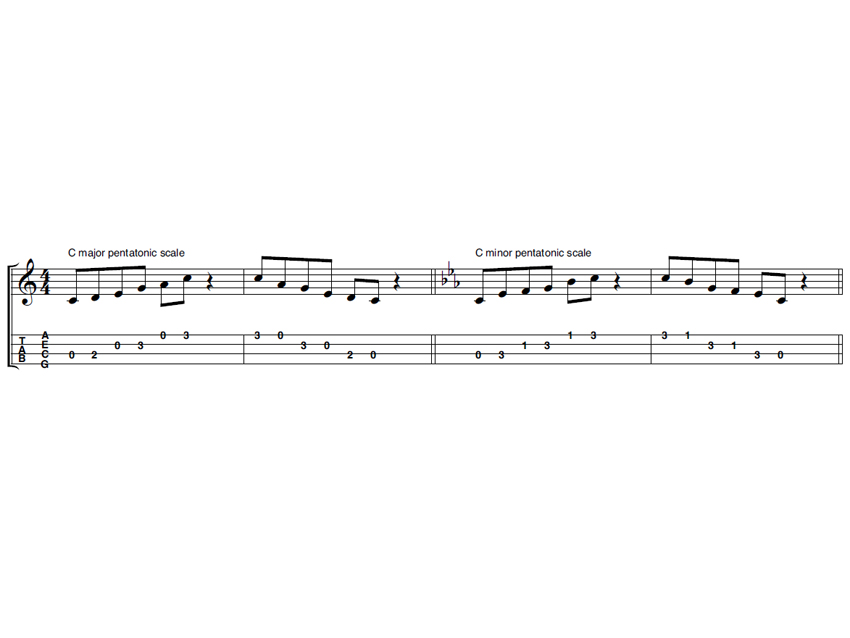
Major and minor pentatonic scales
You could also try using a classical alternating index/middle (i/m) picking approach here or even just using your picking hand thumb to pluck each note. Alternating between two picking fingers is easy with these scales because of their two-note-per-string patterns.
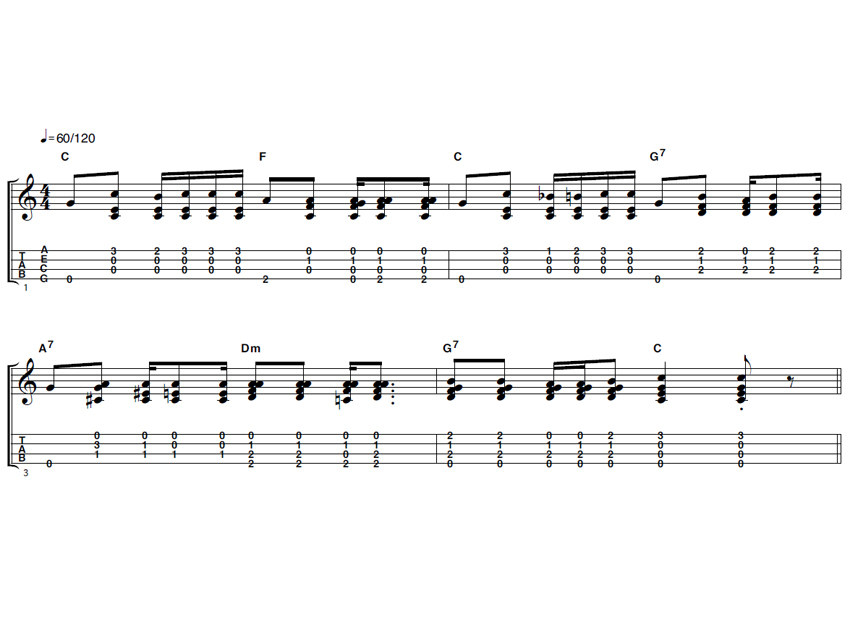
Strumming
Try strumming with the index (i) finger on your picking hand. Strike the strings using your nail on the downstrokes and then the flesh of your fingertip on the upstrokes. Keep your hand loose in order to strike the strings with a strong, relaxed stroke.
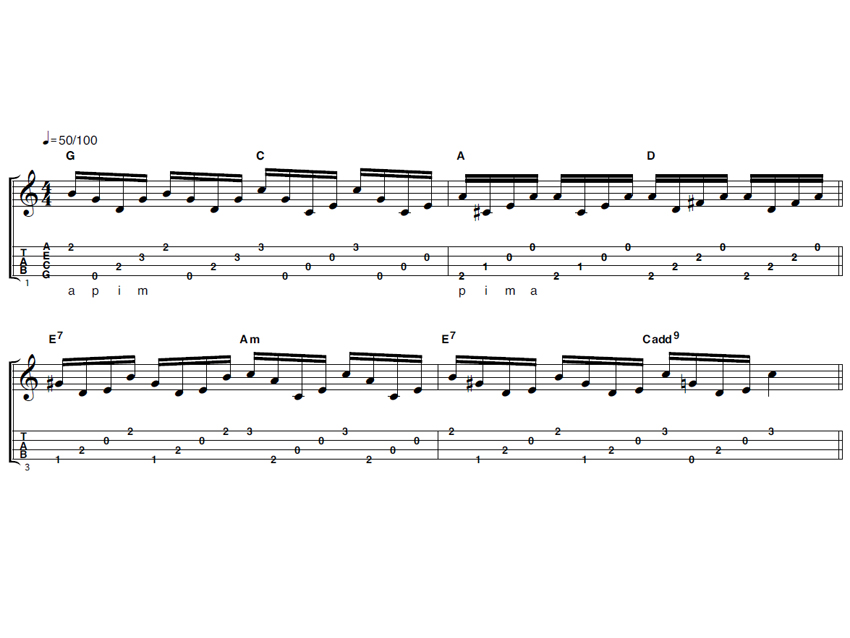
Fingerpicking
Aim to develop independence with the thumb (p), index (i), middle (m) and annular (a) fingers on your picking hand. Use this fingerpicked piece as a drill to build up fluency and think about keeping the dynamics and timing even on each finger.
Liked this? Now read: Guitar lessons for beginners
Connect with MusicRadar: via Twitter, Facebook and YouTube
Get MusicRadar straight to your inbox: Sign up for the free weekly newsletter